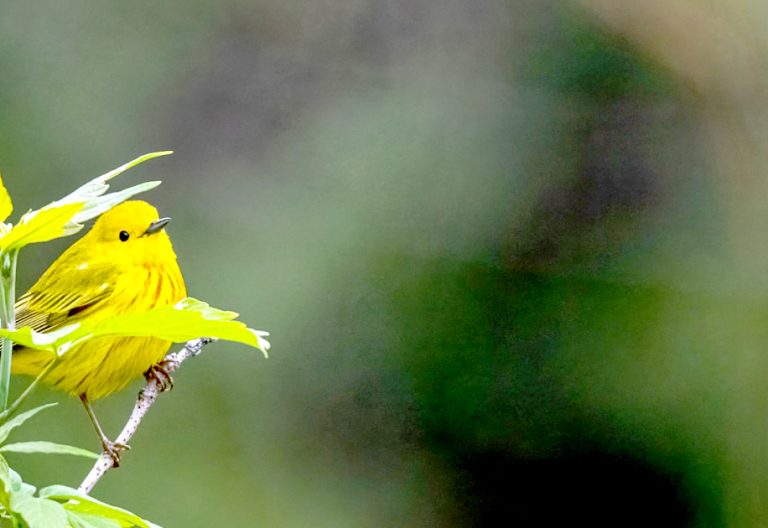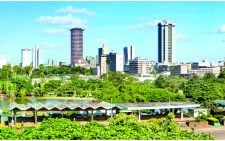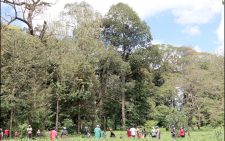Agrifood systems heroes of global biodiversity day

Today is the International Day for Biological Diversity, as humanity faces the sobering reality that only five years are left to implement global agreements to protect nature and deliver on the 2030 Agenda.
The United Nations proclaimed May 22 to increase understanding and awareness of biodiversity issues. The UN General Assembly took on the day to commemorate the adoption of the Convention on Biodiversity (CBD) text on May 22, 1992, by the Nairobi Final Act at the UN Environment Programme (UNEP) headquarters in Kenya.
This year’s theme is ‘Harmony with Nature and Sustainable Development’.
According to UNEP, biological diversity is often understood in terms of a wide variety of plants, animals and microorganisms, but it also includes genetic differences within each species – for example, between varieties of crops and breeds of livestock.
Biodiversity also encompasses the variety of ecosystems (lakes, forests, deserts, agricultural landscapes) that host multiple kinds of interactions among their members, humans, plants and animals.
It underpins essential ecosystem services that provide food, clean water, protection and much more.
Biological diversity resources are the pillars upon which civilisations are built, states UNEP. Fish provide 20 per cent of animal protein to about 3 billion people. Over 60 per cent of the human diet is provided by plants.
As many as 80 per cent of people living in rural areas in developing countries rely on traditional plant-based medicines for basic healthcare.
Special fund
The loss of biodiversity threatens all, including our health. Biodiversity loss could expand zoonotic diseases – diseases transmitted from animals to humans – while, on the other hand, if we keep biodiversity intact, it offers excellent tools to fight against pandemics like those caused by coronaviruses.
Despite growing recognition that biological biodiversity is a global asset of tremendous value to future generations, many species are being significantly reduced by human activities.
Given the importance of public education and awareness about this issue, the UN decided to celebrate the International Day for Biological Diversity annually.
In early March this year, governments of the 196 member states to the UN Convention on Biodiversity (CBD) agreed on a strategy to mobilise resources needed for the protection of people and planet.
The agreement was reached at the resumed session of the UN Biodiversity Conference (COP16) at the Food and Agriculture Organisation (FAO) headquarters in Rome, Italy. Talks at the biodiversity summit had been suspended on November 2, 2024, in Cali, Colombia, after tense negotiations ended in a deadlock.
Resuming in Rome, parties to the CBD struck a deal on a resource mobilisation strategy, establishing permanent arrangements for the financial mechanisms of the convention and harnessing the mixture of financial instruments needed to close the biodiversity finance gap.
Governments also agreed to achieve the action targets for the implementation of the Kunming-Montreal Global Biodiversity Framework (KMGBF), the universal masterplan to halt and reverse biodiversity loss adopted under the CBD at COP15 in Montreal, Canada, in July 2022.
A special fund, the Cali Fund for the Fair and Equitable Sharing of Benefits from the use of digital sequence information (DSI), was launched, a major milestone for the CBD as it ushers in a new era of mobilising private funds for biodiversity finance.
This year’s Biodiversity Day theme, ‘Harmony with Nature and Sustainable Development’ is attuned to the delivery of both the 23 KMGBF and the 17 Sustainable Development Goals (SDGs) targets, most of which are far off-track, with only five years midway to 2030.
Amid accelerating biodiversity loss and growing threats to ecosystems, scientists and agricultural experts say sustainable agrifood systems can play a crucial role in reversing these trends while ensuring food security for a growing global population.
Agrifood systems are directly linked to more than half of the 23 targets of the KMGBF, and in some way to all others.
Therefore, agrifood sectors have a significant role in planning, implementation, and monitoring of actions necessary to meet the framework’s targets.
Biological diversity (biodiversity) is defined as “the variability among living organisms from all sources – terrestrial, marine and other aquatic ecosystems and the ecological complexes of which they are part, including diversity within species, between species and of ecosystems”.
Agrifood sectors – crop and livestock production, forestry, fisheries and aquaculture – depend on biodiversity as the foundation for sustainable production, ensuring long-term food security and nutrition for all.
Biodiversity encompasses many species, varieties and breeds directly used for food, fuel and fibre.
Species that play critical roles in ecosystem functions and services, such as pollinators that increase crop yields, and species that help control pests, contribute to healthy soils, or provide oxygen, food or habitats for harvested fish species.
It also includes the genetic diversity within all the species that support food and agricultural production.
Farmers, livestock keepers, forest dwellers and fisherfolk are managers and custodians of biodiversity.
Local knowledge
CBD members reached consensus on a strategy to mobilise resources for the protection of people and planet at the FAO headquarters in Rome, highlighting the connections between the KMGBF and agrifood sectors.
FAO data shows that smallholders with less than two hectares (4.94 acres) operate only around 12 per cent of all agricultural land, and produce roughly 35 per cent of the world’s food.
These producers often have vast knowledge about biodiversity and its importance in our food supply.
Even though Indigenous Peoples constitute only around 6 per cent of the global population, they manage or have tenure rights over around 40 per cent of the planet’s protected areas and ecologically intact landscapes (excluding Antarctica).
Statistics indicate 3.83 billion people, many in poor and rural populations, depend on agrifood systems for their livelihoods. Everyone depends on agrifood systems for food, fuel, timber and fibre.
The value of agricultural production (US$5.2 trillion) has increased more than threefold since 2000.
Yet, in 2023, up to 757 million people worldwide faced hunger, 2.8 billion could not afford a healthy diet, and 2.6 billion people were overweight or obese, mainly because of bad diets.
Agrifood systems depend on biodiversity. At least 50,000 wild species are used globally for food, energy, medicine, materials and other purposes through fishing, gathering, hunting and logging.
About 35 per cent of crop production depends to some degree on animal pollinators, such as bees, birds and bats. The value of pollinators’ contributions to global crop output is estimated to be US$235-577 billion annually.
Over 450 species are managed to help supply ecosystem services supporting food production – for example, for pollination and pest control – with far more unmanaged species also essential to these services.
Around 8,800 livestock breeds are used for food and agriculture, many with unique characteristics that can contribute to meeting the challenges related to climate change.
Biodiversity, including the species, genetic and ecosystem diversity that supports food and agriculture, is declining globally.
The primary drivers of biodiversity loss – land-use change, climate change, pollution, overexploitation of wild species and the spread of invasive species – can all be linked to unsustainable agricultural practices.
The transformation of agrifood systems can contribute to the conservation, restoration, and sustainable use of biodiversity while also achieving synergies with climate change mitigation and adaptation, land restoration, and efforts to improve food security and nutrition.












